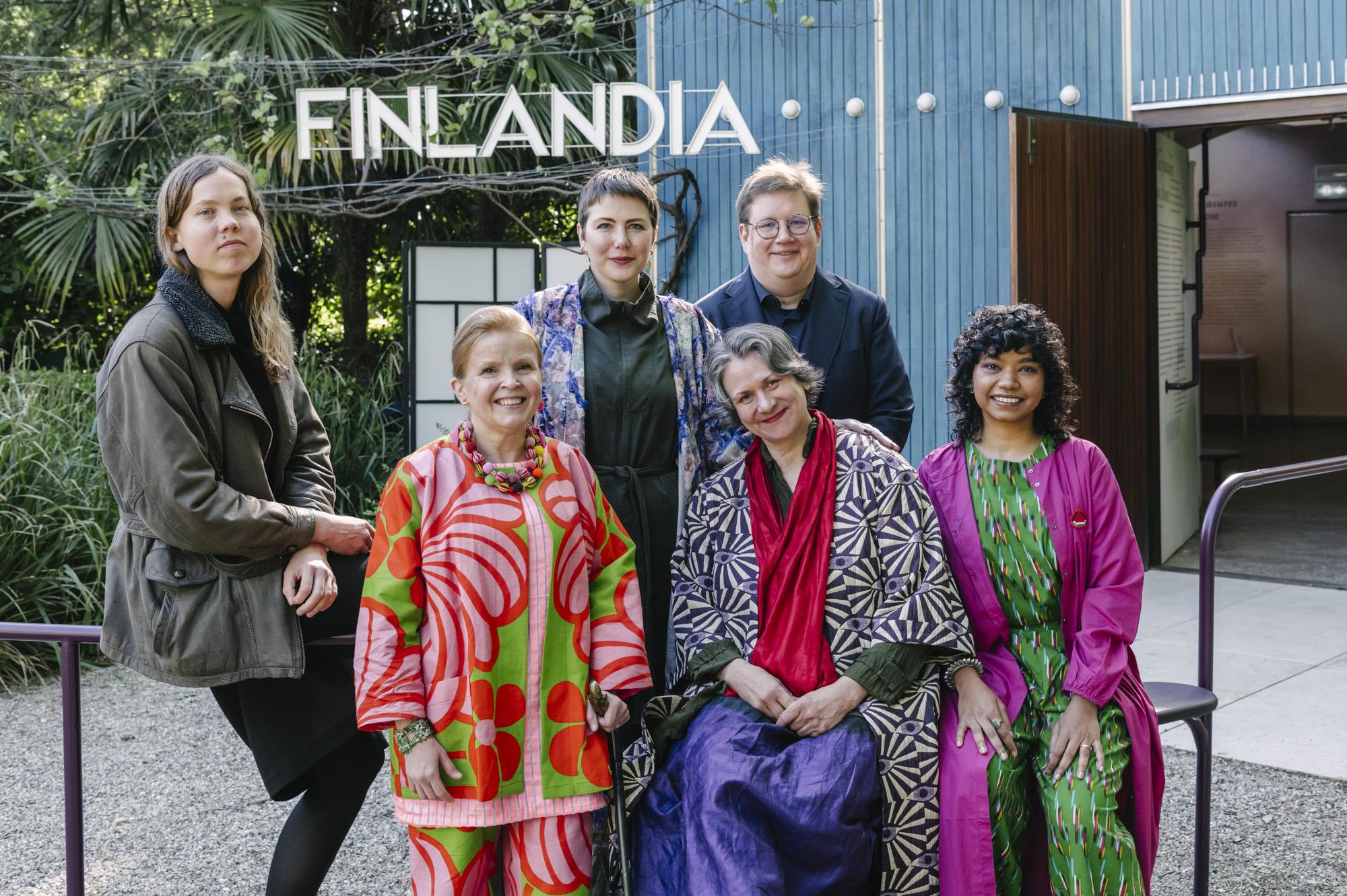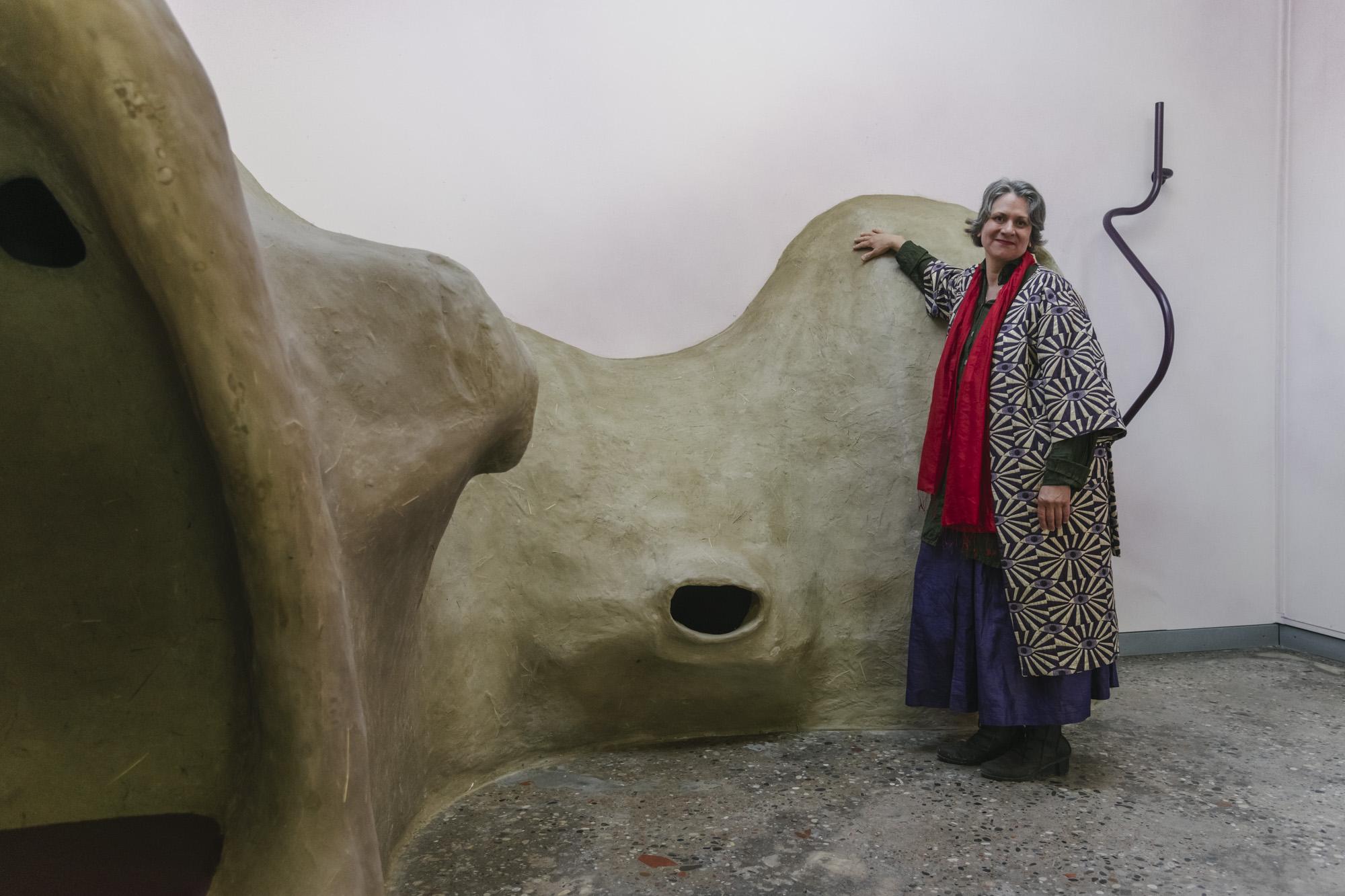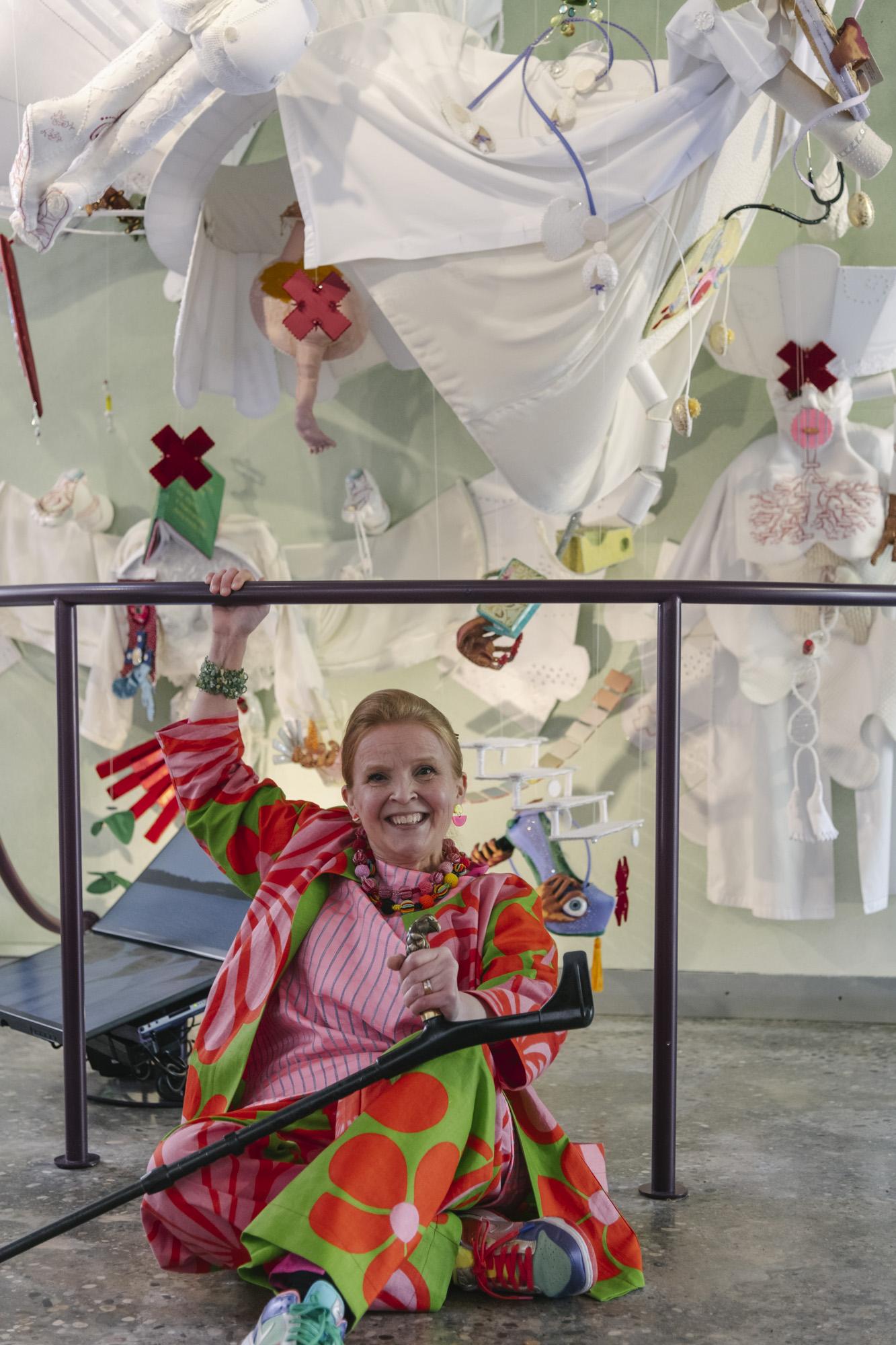
This week marks the opening of The pleasures we choose, an exhibition presented in the Pavilion of Finland at the 60th International Art Exhibition – La Biennale di Venezia. The multifaceted collaboration by artists Pia Lindman, Vidha Saumya, Jenni-Juulia Wallinheimo-Heimonen, curators Yvonne Billimore and Jussi Koitela, and architectural designer Kaisa Sööt speaks about the inseparability of art and life. With the long-awaited opening around the corner, we talked with the artists about their journey towards the Biennale and beyond.
The Venice Biennale, founded in 1895, still holds the position of one of the most important international events showcasing contemporary art. For seven months, the Biennale brings together artists from all over the world to present their works in numerous exhibitions and events.
This year for the Pavilion of Finland, Frame Contemporary Art Finland has commissioned new works from artists Pia Lindman, Vidha Saumya, Jenni-Juulia Wallinheimo-Heimonen. Embraced as a collective project, the exhibition The pleasures we choose precedents a tight, collaborative process between the three artists, curators Yvonne Billimore and Jussi Koitela and an architectural designer Kaisa Sööt. The collective exchange in the last year and a half has formed building blocks for the new multidimensional works.
Vidha Saumya describes how shared vision, open communication and conversations have connected the artist’s work through their camaraderie, curatorial vigour, architectural dimensions and the support in producing the works.
“The year-long journey culminates at the Biennale, it’s exciting and fulfilling. Having a conducive environment to create freely, where differences, doubts and experiments are encouraged, was instrumental to sustaining the work process. It reinforces my belief that such an ethos is essential not just for artistic expression but for our political and emotional lives as well.”
”I could not have hoped for a more fruitful process collaborating with fellow artists, curators, and architect Kaisa Sööt”, Pia Lindman adds. “We have learned from each other and honed our personal and collective messages in conversations. I am inspired by the fact that we all share the same conviction about the potential of art as a means to inspire, build, and mediate other, better, worlds.”

Creating empowering connections through embodied experiences
Blurring the boundaries between art, architecture, and social commentary, the Pavilion of Finland brings together three artists for whom art, life, and activism are intertwined. Lindman, Saumya and Wallinheimo-Heimonen’s practices are acutely informed by their embodied experiences of structural, environmental and social imbalances. At the same time, their works celebrate the pleasure of the personal as a powerful means of reimagining the world as we know it.
Jenni-Juulia Wallinheimo-Heimonen’s work How Great is Your Darkness is a multi-dimensional artwork containing a textile installation, moving wheelchair sculpture and short videos, pointing to the hate speech people with disabilities are subjected to—particularly from within the medical and social care industries. Across her practice as an artist and activist, Wallinheimo-Heimonen has advocated for a shift from the medical model of disability, in which those with disabilities are typically “treated” to fit society, towards a social model, in which it is the ableist cultural attitudes that need to be transformed.
“My installation is based on a survey by the Finnish Ministry of Justice, according to which 50 % of the hate speech faced by people with disabilities comes from social and healthcare personnel and 25 % from other authorities. Despite the 30-year-old Social Model of Disability, medicine still has a gatekeeper position in social services. It’s often a dark comedy, where for example made-to-measure shoes can be considered unnecessary for a wheelchair user, even if the person in question needs to dress up for work. “ Wallinheimo-Heimonen says.
Vidha Saumya’s work To all the barricades… the rumour got you is presented as a bricolage of three distinct bodies of work across drawing, sculpture and cross-stitch. The work explores the ideas of desire, intimacy, and belonging and how they are shaped when challenged by the realities of daily life – the demands of time, utility, and (dis)placement.

“The works address bureaucracy and the complexity of a trickle-down economy that isolates individuals and hinders genuine social connection”, describes Saumya. “I’m drawn to the sculptural potential of discarded urban debris. These seemingly insignificant objects, often relegated to the margins of our cityscapes, hold a unique sculptural potential. They exist in a liminal space, transitioning from use to obsolescence, becoming unintentional monuments to a society’s cast-offs. In parallel with this exploration, I’ve been drawn to the concept of stains, both literal and metaphorical. Stains question who and what is rendered a contaminant in our natural and social climates.”
All three artists work with a wide range of materials and processes – including drawing, needlework, video, poetry, sculpture and healing. The Biennale production has also allowed exploring new techniques and scales. Creating a work for a larger audience and a longer duration required the artists to consider how the ideas would translate and resonate, given the space and the long time span.
“This led to feeling confident about stepping outside my comfort zone. Working at this scale has enhanced my artistic fluency. The work demanded a new level of attention to thinking simultaneously about the overall work as well as the intricate details. It pushed me to explore different materials and techniques, ultimately expanding my skill set and deepening my understanding of what’s possible within my chosen medium”, Vidha Saumya says.
Pia Lindman’s work Collectivities Cycle takes the form of an air-conditioning clay sculpture that exposes visitors to the sculpture’s organic matter and the microbes it supports. Accompanying “living digital paintings” emerge from her ongoing participation in an online Tong Ren healing community. Lindman’s practice is expressing her heightened sensitivity to the nervous system and awareness of the micro-signals within her body. She translates these subsensorial signals into visual images, melodies, words, and colours that explore the nuances of different environments. Investigating different realms of the subsensorial across lifeforms, Lindman’s work pays particular attention to current planetary conditions, such as capitalism, extraction industry, pollution, climate change, and loss of biodiversity.
“I see that expectations of particular aesthetics of human bodies are imposed on us. We must be capable of consistent health, productivity, consumption, and behaviour. We are pitted against each other and this makes us anxious bodies, prone to become toxic and ill. Competition prevents us from coming together, finding pleasure in our collectivities and yielding them as social and political forces. In the hopes of fostering such collective, more-than-human, agency, I strive to build empowering connections between healing, environment, and collectivities.”
Heading to Venice to explore the power of art

As the biennale gates open to the audiences on 20 April, the exhibition and the works will live on, sparking conversations and welcoming each visitor’s individual experiences. The exhibition introduces forms of “access architecture”, considering different access and bodily needs whilst encouraging new sensory experiences. Acting as a guiding element, the site-specific exhibition architecture also considers different rhythms and durations of engagement.
The pleasures we choose speaks to the inseparability of art and life. It refuses the myth that the artist is separate from the world, emphasising that precisely personal experiences drive us towards building new collective futurities into existence. Preparing for the exhibition celebrating joy and everyone’s right to choose pleasure with the ongoing ecological and political crisis in the world, brings up mixed emotions.
“The recent and ongoing wars and destruction are not only horrendous experiences in personal lives but have effects on a planetary scale. The focus has moved from climate actions and fighting pollution to toxic human-to-human conflicts. I keep asking myself what can art do? Can art suggest and mediate care and love regarding our co-dependent lives on this planet? Will this mediation affect change? Venice Biennale might be one of the most appropriate venues to explore these questions”, Pia Lindman reflects.
“There’s thrilling anticipation.” Saumya describes. “Reflecting on the process, I am increasingly cognizant and thankful for the support structures that nurtured my artistic process. Beyond personal fulfillment, I am eager to witness what conversations the work sparks, and I look forward to engaging in the new perspectives that arise after that.”
“I radiate from the privilege of being an artist on the way to Venice, simultaneously exposed to a heavily charged world situation”, Wallinheimo-Heimonen summarises. “It feels like I’m holding a computer mouse that should be able to control the ocean. I haven’t had the opportunity to visit previous Venice Biennales. Even though I’ve been making political art for 20 years, the history, politics, ongoing wars and environmental issues are flooding my mind. The adventure of a lifetime lies ahead.”
Text: Katri Kuisma / Frame Contemporary Art Finland
